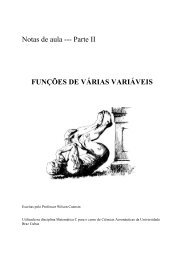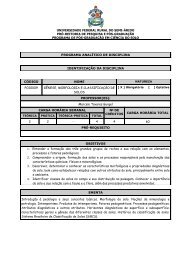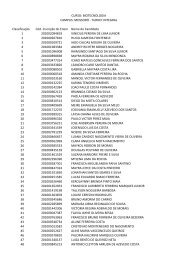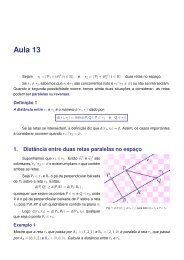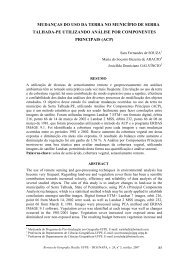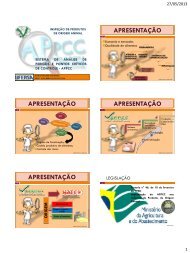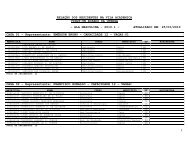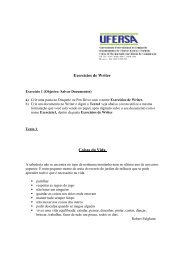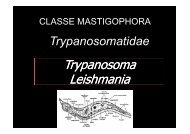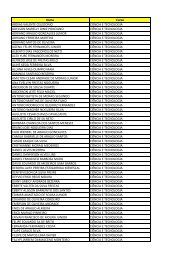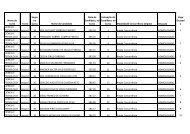Injectable Anesthesia and Analgesia of Birds by J. Paul ... - Ufersa
Injectable Anesthesia and Analgesia of Birds by J. Paul ... - Ufersa
Injectable Anesthesia and Analgesia of Birds by J. Paul ... - Ufersa
Create successful ePaper yourself
Turn your PDF publications into a flip-book with our unique Google optimized e-Paper software.
Drug Dosage (Dose), Route Species / Remarks Reference<br />
Prop<strong>of</strong>ol<br />
4 - 12 mg, IV, for<br />
induction / 0.5 mg/kg/min,<br />
IV, maintenance<br />
Barn Owl (Tyto alba): induced anesthesia with 4 mg given<br />
in 1 mg boluses at 30-sec intervals; an additional 8 mg was<br />
given over the next 10 min due to bird’s response to feather<br />
plucking; a constant infusion <strong>of</strong> prop<strong>of</strong>ol was used to<br />
maintain a stable plane <strong>of</strong> anesthesia; transient decrease in<br />
SAP, DAP, <strong>and</strong> MAP observed immediately after<br />
induction; after infusion was stopped wing movement<br />
occurred within 5 min <strong>and</strong> ability to lift head up <strong>and</strong><br />
maintain sternal posture within 30 min; appropriate for<br />
short surgical procedures (in this case a tracheal resection)<br />
(case report).<br />
Mama, et<br />
al. [1]<br />
4.5 - 9.7 mg/kg, IV<br />
Chickens (Gallus gallus domesticus); maintained <strong>by</strong><br />
constant infusion <strong>of</strong> prop<strong>of</strong>ol, 0.5 - 1.2 mg/kg/min;<br />
arrhythmias common; significant respiratory <strong>and</strong><br />
cardiovascular depression; hypoxemia also common;<br />
narrow margin <strong>of</strong> safety, 3 times the induction dose was<br />
fatal.<br />
Mallard ducks; 1 to 4 mg IV bolus maintenance doses<br />
(0.7 - 4.5 mg/kg) at ~ 5 min intervals; apnea after induction<br />
bolus, but increased in respiratory rate with time; risk <strong>of</strong><br />
severe bradycardia; light plane <strong>of</strong> anesthesia; intraoperative<br />
analgesia required<br />
Ostriches (Struthio camelus); ketamine/medetomidine<br />
(preanesthetic) allowed sufficient sedation to place IV<br />
catheter; prop<strong>of</strong>ol induction & maintenance (0.2<br />
mg/kg/min constant rate infusion); apnea & bradycardia<br />
observed; anesthesia rated good<br />
Pigeon (Columbia livia): bolus dose produced a smooth,<br />
rapid induction, with good muscle relaxation, <strong>and</strong> loss <strong>of</strong><br />
voluntary reflexes lasting 2 - 7 min. Lethal Dose<br />
determined to be ~ 20 - 26 mg/kg if ventilation was not<br />
assisted.<br />
Wild Turkeys; maintained surgical plane <strong>of</strong> anesthesia with<br />
0.5 mg/kg/min <strong>of</strong> prop<strong>of</strong>ol, IV; apnea immediately after<br />
induction lasted 10 - 30 sec; risk <strong>of</strong> hypoxemia; smooth<br />
recovery<br />
Lukasik<br />
[23]<br />
7.3 - 11.2 mg/kg (10 mg<br />
dose), IV<br />
Machin<br />
[21]<br />
3 mg/kg (induction), IV<br />
Langan<br />
[22]<br />
14 mg/kg, IV<br />
Fitzgerald<br />
& Cooper<br />
[25]<br />
5 mg/kg (in 20sec), IV<br />
Schmacher<br />
[24]<br />
Thiopental<br />
20 mg/kg, intraosseous<br />
Chickens: time to induction was ~12 - 21 seconds; allowed<br />
intubation; increased respiratory rate; time to recovery ~<br />
13 - 20 min; failure rate for cannulation <strong>and</strong> induction <strong>of</strong><br />
anesthesia was 21% (3/14).<br />
Valverde,<br />
et al. [3]<br />
Tiletamine (T) /<br />
Zolazepam (Z)<br />
5 mg/kg, IM<br />
Great Horned Owls (Bubo virginianus): Induction times<br />
ranged from ~5.5 - 12 min; times to st<strong>and</strong>ing ranged from<br />
~60 - 77 min. Rapid decrease seen in heart rate within 2<br />
min after induction then remained constant. Respiration<br />
rates decreased for the initial 20 min <strong>of</strong> anesthesia.<br />
Inductions <strong>and</strong> recoveries were smooth.<br />
Kreeger, et<br />
al. [13]<br />
10 mg/kg, IM<br />
Great Horned Owls (Bubo virginianus): Induction times<br />
ranged from ~3.2 - 4.0 min; times to st<strong>and</strong>ing ranged from<br />
~81 - 95 min. Heart rates within first 2 min after induction<br />
remained higher than after a 5 mg/kg dosage but decreased<br />
over time. Respiration rates decreased for the initial 20 min<br />
<strong>of</strong> anesthesia. Inductions <strong>and</strong> recoveries were smooth.<br />
Total recover times ranged from ~210 - 283 min.<br />
Kreeger, et<br />
al. [13]<br />
2.3 - 5.8 mg/kg, IV<br />
Ratites: used to induce sternal recumbency; rapid <strong>and</strong><br />
smooth; 3.4 - 4.9 mg/kg for emus; 3.0 - 5.8 mg/kg for<br />
rheas; 2.3 - 4.0 mg/kg for ostriches<br />
Lin [30]



